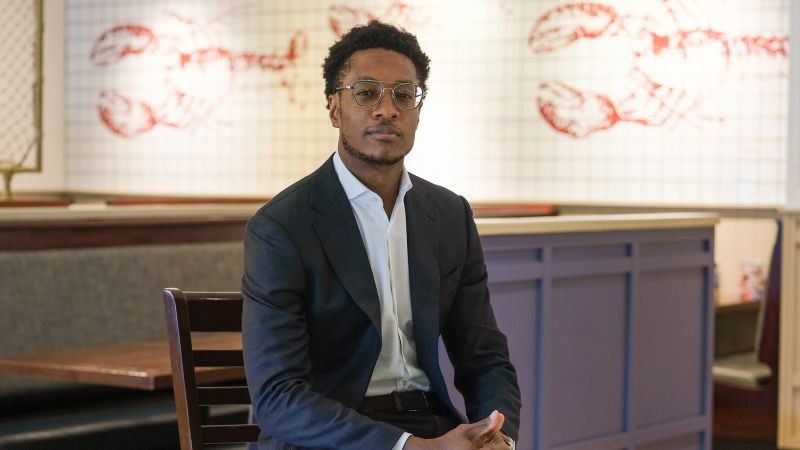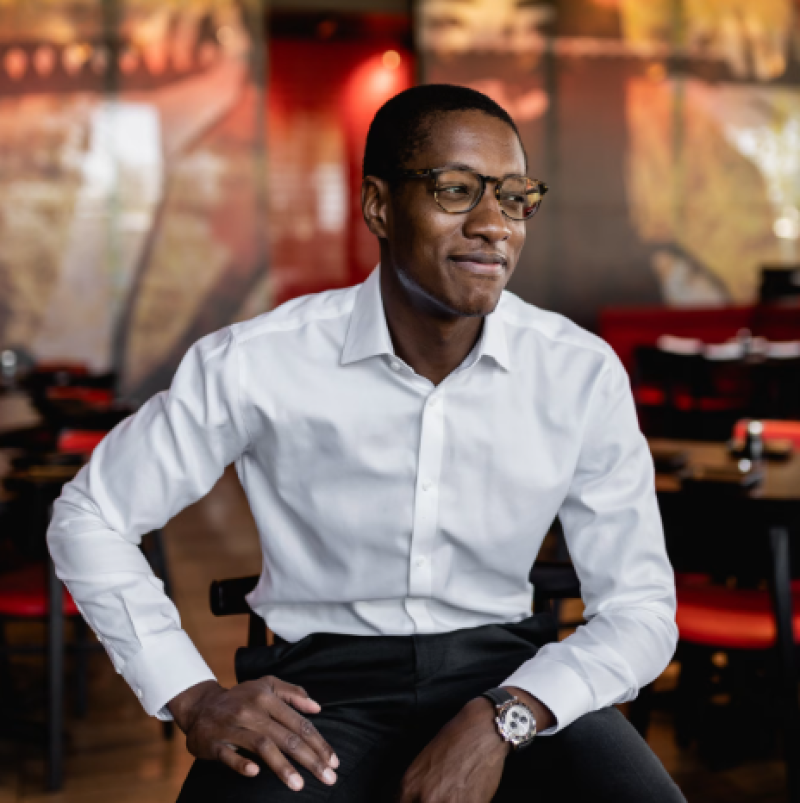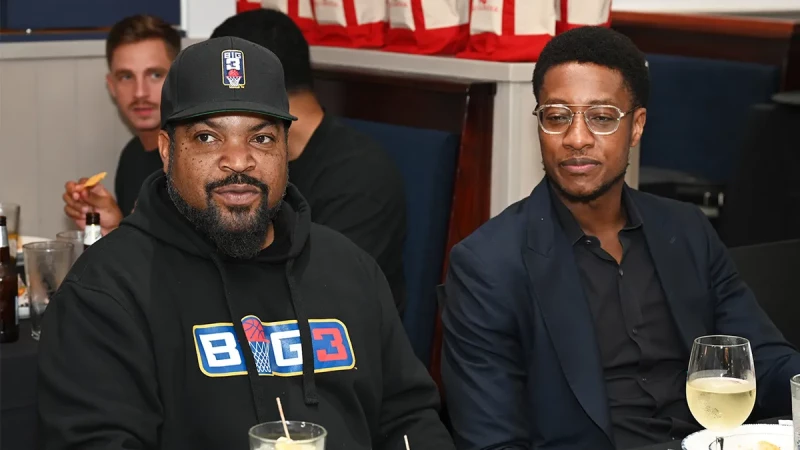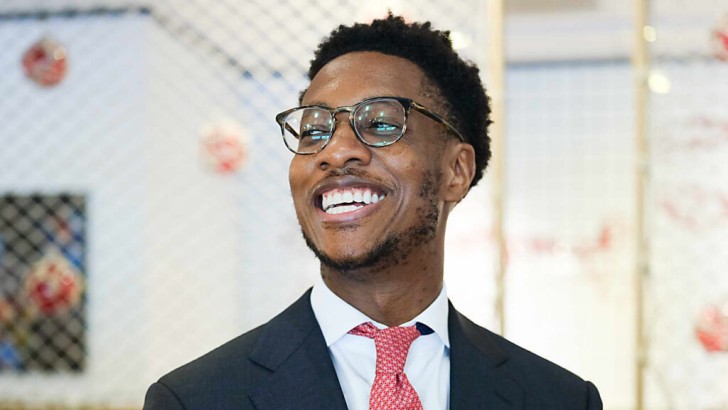- The Early Years: When the Future Red Lobster CEO Started Making Money
- Breaking Into Wall Street: The Goldman Sachs Years
- Moving Up: The Private Equity Path
- The P.F. Chang's Breakthrough: Before Red Lobster CEO Role
- The Peak: Red Lobster CEO Takes On the Impossible
- How Red Lobster CEO Thinks: Core Principles That Actually Work
Red Lobster was in serious trouble when Damola Adamolekun walked through the door. We're talking $1 billion in debt, more than 100 shuttered locations, and a PR nightmare from that endless shrimp deal that cost millions. Most executives would've run in the opposite direction. But Adamolekun? He saw it differently.
Here's the thing about turnarounds in the restaurant business—they're brutally hard. Most fail spectacularly. But when this 36-year-old Nigerian-American executive took over as Red Lobster CEO in August 2024, he wasn't intimidated. He'd already pulled off one impossible comeback at P.F. Chang's during the pandemic. Now he was ready for round two.
The guy's story is pretty wild when you look at it. Born in Nigeria back in February 1989, Adamolekun grew up all over the place—Nigeria, Zimbabwe, the Netherlands. His parents were no joke either—dad was a neurologist, mom a pharmacist. When he was nine, the family packed up and moved to Springfield, Illinois.
And get this: Red Lobster became their Sunday spot after church. So years before becoming Red Lobster CEO, little Damola was cracking crab legs at that same chain with his family. Talk about full circle.
The Early Years: When the Future Red Lobster CEO Started Making Money

Most teenagers are worried about video games and dating. Adamolekun? He was building a stock portfolio. While waiting tables during high school in Columbia, Maryland, he was already thinking like an investor. At 16 years old, he opened his first stock portfolio and dumped everything he earned into it.
This wasn't just some kid playing around with spare change. This was the beginning of a financial mindset that would eventually help him turn around struggling restaurant chains worth billions. Learning to earn, save, and invest as a teenager gave him something most MBA graduates never get—real-world understanding of how money actually works.
Breaking Into Wall Street: The Goldman Sachs Years

Landing a Goldman Sachs internship at 19? That's impressive by itself. But Adamolekun was doing it while playing on Brown University's Ivy League champion football team, leading the Brown Investment Group, and studying economics and political science. The guy basically never slept.
He started as a summer analyst in Goldman's private equity group from 2009 to 2010. After graduating in 2011, they brought him back as an Investment Banking Analyst, where he worked until 2013. Back then, analysts at Goldman were pulling in around $85,000 to $95,000 in base salary, plus bonuses that could easily push total comp into six figures for top performers.
But it wasn't really about the money for Adamolekun. He was getting an education you can't buy. Working on massive deals, learning how global markets actually function, and figuring out what separates winners from losers in high-pressure situations. As the future Red Lobster CEO would later say, Goldman taught him three things that shaped everything after: disciplined preparation, clear communication, and staying cool under pressure.
Moving Up: The Private Equity Path

After Goldman, Adamolekun jumped to TPG Capital from 2013 to 2015, one of the biggest names in private equity. This was serious money territory—associates at firms like TPG were making anywhere from $125,000 to $175,000 base, with bonuses that could match or double that. For someone in their mid-twenties, that's pretty nice. But more importantly, he was now on the deal-making side, not just analyzing numbers for other people.
Then came the big leap: Paulson & Co., the investment firm run by billionaire John Paulson. As a partner there, Adamolekun wasn't just crunching numbers anymore. He was finding deals, managing massive investments, and learning how the real players operate. Partners at major private equity firms can pull in anywhere from several hundred thousand to multiple millions annually when deals go well. It's where he really started building serious wealth.
The P.F. Chang's Breakthrough: Before Red Lobster CEO Role

This is where things get really interesting. In 2019, when Paulson & Co. and TriArtisan Capital were eyeing P.F. Chang's, Adamolekun pitched the $700 million deal to John Paulson himself. Gutsy move. It paid off big time.
He started as Chief Strategy Officer, but by 2020, at just 31 years old, he became P.F. Chang's first Black CEO. And here's the kicker—he took over right as COVID hit. Most people would've considered that the worst timing ever. But Adamolekun saw opportunity where others saw disaster.
Under his watch, P.F. Chang's launched a to-go concept, massively expanded delivery, and made strategic moves that brought the company back to profitability. By 2021, sales jumped 31.7%, and the company was doing over $1 billion in annual revenue. Restaurant CEOs running billion-dollar operations typically make between $2 million and $8 million a year when you factor in salary, bonuses, and equity stakes.
Adamolekun's philosophy during that crazy time? "Crisis creates clarity. When everything's on fire, you quickly figure out what actually matters." That mindset was about to come in handy again.
The Peak: Red Lobster CEO Takes On the Impossible

When Red Lobster filed for bankruptcy in May 2024, pretty much everyone assumed it was over. The endless shrimp promotion alone had drained $11 million in one quarter. Over 100 locations were gone. Employees were demoralized. The debt? Over $1 billion. Not exactly a dream scenario.
But Fortress Investment Group had other ideas. In August 2024, they made Adamolekun the youngest Red Lobster CEO in the chain's 57-year history. By September, the company was officially out of bankruptcy under new ownership, with Fortress dropping $60 million to stabilize the remaining 545 locations.
So what's a Red Lobster CEO making these days? While the exact numbers aren't public, CEOs running companies with hundreds of locations and revenue in the hundreds of millions typically pull in somewhere between $3 million and $10 million annually. That includes base salary, performance bonuses, equity, and profit-sharing. Given that Adamolekun's running a high-stakes turnaround with his reputation on the line, you can bet his package includes massive incentives tied to hitting recovery targets.
His net worth right now sits around $10 million, built up from years on Wall Street, private equity partnerships, executive compensation, and equity in the companies he's led. If Red Lobster's turnaround works the way he's planning—positive net income in 2026, with earnings projected to jump 43% from 2025 to 2027—that number's going to climb significantly.
How Red Lobster CEO Thinks: Core Principles That Actually Work

Adamolekun's success philosophy isn't some complicated MBA theory. It's pretty straightforward—but ruthlessly effective. Here's what's guided him from teenage waiter to transformational CEO:
- Start Your Day With a Win. Adamolekun's not a morning person. But he still drags himself out of bed at 4 or 5 a.m. to go running before work. It's not about fitness—it's psychology. "I don't like to get up early in the morning to go running, but I do it so I can start my day with a conquest. That is my number one advice: Conquer something early in the day. You'll feel better. Your brain will work better. You'll be in a better mood. And you'll feel more confident because that early win builds trust that when you come up against something difficult, you'll be able to do it."
- Treat Your Career Like an Investment Portfolio. This one's straight from Adamolekun's Wall Street days. "Investing is the business of risk assessment, and I think you should manage your career the same way. Risk on its own isn't something to avoid. You just need adequate return." When he's evaluating opportunities, he asks three questions: What's the real upside beyond just money? Can you trust the people backing you? Does this actually match what you're good at?
- Don't Be Scared to Aim High."Some people refuse to set ambitious goals because they're terrified of failure. I'm not afraid of that. I don't mind setting really high goals, and I don't mind going after difficult things. You do your best and try to win." This is why Adamolekun can confidently say he's going to pull off "the greatest comeback in the history of the restaurant industry" at Red Lobster without flinching. Most executives would never say something that bold out loud. He doesn't care.
- Build Competence First, Confidence Follows. One of Adamolekun's favorite sayings: "Competence builds confidence, and confidence builds competence." He tells young professionals to stop worrying about imposter syndrome and start getting actually good at things. Real confidence doesn't come from positive thinking—it comes from knowing you can do the work because you've done it before.
- Move Fast, Fix What You Can Now. Adamolekun's approach is data-driven but fast-moving. "When you're in a distressed situation, you can't waste months trying to figure out what to do." At Red Lobster, he immediately changed things he could control: better music in the restaurants, faster greetings, more attentive service, menu items customers actually wanted. The customer sentiment score doubled from 30 to 60 within months.
- Water Always Finds a Way Around Obstacles. Adamolekun's father used to tell him a Yoruba proverb: "Omi kii r'ehin igi"—water always finds its way around obstacles. Combined with what his name means in Yoruba ("the blessing of wealth"), this shaped how he thinks about problems. Growing up in Nigeria, Zimbabwe, the Netherlands, and the U.S. taught him to adapt to different environments fast—a skill that's proven pretty useful when you're trying to turn around struggling companies.
- Put People First. When Adamolekun took over Red Lobster, morale was in the gutter. His approach focuses on what he calls the three Cs: clarity, capability, and communication. He's rebuilding employee trust through "red carpet hospitality"—basically treating service work like an act of honor. "It's about making the proposition of working at Red Lobster better than the proposition of working anywhere else."
And it's working. Red Lobster brought back favorites like hush puppies and popcorn shrimp, added new hits like lobster pappardelle pasta and bacon-wrapped scallops, and launched those viral seafood boils everyone's been posting about. They're planning to drop $500,000 on renovating each of the 545 locations over the next four to five years, starting with an Atlanta location in early 2026.
The marketing moves have been smart too. Partnerships with Dr. Dre and Snoop Dogg for specialty cocktails, sponsoring Ice Cube's BIG3 basketball league, hosting Ciara's album release party. Adamolekun even started appearing in Red Lobster commercials after the team noticed business spike when he went on The Breakfast Club radio show.
"No matter what you do, the best is to be the best at what you do," Adamolekun said recently at Florida International University. Pretty simple statement, but it captures his whole approach: excellence isn't about the industry you're in or the cards you're dealt—it's about how hard you go after being the best in whatever arena you choose.
For a Red Lobster CEO trying to pull off what most people thought was impossible—reviving a beloved but bankrupt brand with almost 60 years of history—that mindset might just be what separates another failed turnaround from the comeback story of the decade.
 Sergey Diakov
Sergey Diakov

 Sergey Diakov
Sergey Diakov


